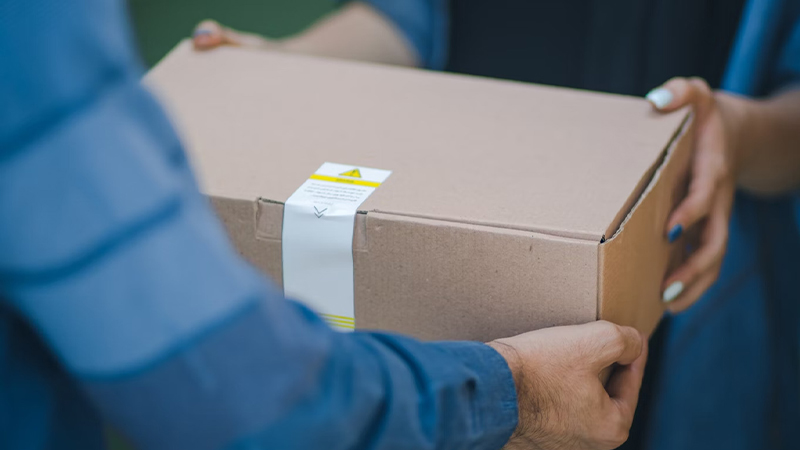Dropshipping offers a simple way of running an online business without the need to manage inventory directly. This simplicity comes with a myriad of challenges, especially in managing inventory risks.
You need to rely on third-party suppliers to deliver products in dropshipping, and this can lead to a wide range of risks such as stockouts, bad tracking of inventory, and supplier unreliability. Effectively managing these risks is crucial to enabling smooth operations and a tolerable customer experience.
In this post, we’ll go through the most important inventory risks in dropshipping and offer actionable tips on how to minimize these risks. We’ll also cover the tools and methods that will allow you to efficiently manage your dropshipping business.

Page overview:
What Are the Most Main Inventory Risks in Dropshipping?
How Do You Prevent Stockouts in Dropshipping?
How to Improve Supplier Reliability in Dropshipping?
How Do You Handle Demand Fluctuations in Dropshipping?
What Are the Software and Tools to Manage Dropshipping Inventory Risks?
What Are the Most Main Inventory Risks in Dropshipping?
Inventory management for dropshipping is not as straightforward as it may seem. Since you don’t carry physical inventory, there’s a higher chance of stockouts, inaccuracy of inventory, and supply chain breakdowns. The following are the main risks that you should be aware of.
Stockouts and Backorders
Stockouts occur when a supplier sells out of a product that you’ve listed in your shop, and it delays the shipment of customer orders. Under the use of third-party suppliers with dropshipping, there is a great possibility of selling a product that is not available if the supplier does not give real-time feedback on their stock levels.
Backorders are very much the same. This happens when your customer places an order for something, but your supplier is out of stock and needs time to restock. Backorders can damage your customer’s experience, causing dissatisfaction and, in some cases, cancellations.
Inaccurate Inventory Tracking
Inaccurate inventory tracking happens if you lack correct information on the availability of products that matches reality. This may be due to errors on the supplier’s side, failure to post the inventory records, or using inefficient inventory management software. It leads to your overselling products that are out of stock, making your customers angry and damaging your reputation.
Supplier Reliability Issues
Your supplier’s reliability is crucial to your dropshipping success. Issues such as delayed shipping, quality of products, or variability in product availability can be a big factor in your business. Your business can experience high return rates and negative feedback if your supplier is always delayed in shipping or sending out defective products.
How Do You Prevent Stockouts in Dropshipping?
Stockouts can be a major issue for dropshipping businesses, but there are several strategies you can use to minimize their occurrence.
Set Up Low Stock Level Auto-Alerts
Avoiding stockouts is as easy as using software that monitors your supplier’s product levels in real time. Most dropshipping sites like Oberlo or DSers have automated alerts that warn you when product levels are low. This gives you a heads-up to either find an alternate supplier or discontinue selling the product until it is replenished.
Diversify Your Supplier Base
Depending on a single supplier can put you at greater risk of stockouts. When they are delayed or out of stock, your whole business is in jeopardy. To avoid this, try to have more than one dropshipping supplier for the same item. This way, if one supplier is out of stock, you have other avenues to get the orders fulfilled.
Maintain Buffer Stock with Suppliers
Although you cannot hold physical stock in the classical sense with dropshipping, you can arrange buffer stock agreements with your suppliers. Buffer stock is a kind of safety net where the supplier carries additional inventory on your behalf, so you always have stock on hand even when demand is higher than anticipated.
How to Improve Supplier Reliability in Dropshipping?
One of the most significant elements of operating a prosperous dropshipping operation is supplier reliability. If your suppliers don’t come through, it will have a direct impact on your reputation and bottom line.
Vet Suppliers Before Partnering
Check a supplier’s reputation before committing. Look up reviews and testimonials from other dropshippers to see how they’ve performed in the past. Check their track record for timely deliveries and quality control. A good supplier will be more inclined to process your orders as agreed.
Utilize Several Trustworthy Suppliers
Never place all your eggs in a single basket. If you are relying on a single supplier, your whole business can be affected by their mistakes. With multiple suppliers, you can reduce the possibilities of delays, stockouts, and poor-quality products.
Establish Clear Communication Channels
One of the most effective ways to prevent reliability issues is by establishing open and transparent communication with your suppliers. Keep in regular contact with them to discuss inventory levels, shipping times, and any potential issues. A good relationship with your suppliers helps ensure that you’re notified early about any changes that may impact your orders.

How Do You Handle Demand Fluctuations in Dropshipping?
In e-commerce, demand can vary wildly, particularly in peak periods such as Black Friday or Christmas. Managing these variations effectively is key to maintaining your business’s stability and responsiveness to market demands.
Monitor Trends and Market Demand
Monitoring market trends and customer demand is essential to inventory management. Use analytics software to track sales trends and estimate demand spikes. You can also monitor social media trends and examine seasonal demands to anticipate what products will be in demand in the coming months.
Apply Dynamic Pricing Strategies
A smart pricing strategy can help you balance supply and demand. During periods of high demand, experiment with raising prices slightly to accommodate the increased inventory cost or postponed shipping. During low demand, lower your prices to attract more buyers and sell merchandise quicker.
Implement Pre-orders for High-Demand Products
For highly demanded products, think about providing pre-order possibilities. Through this, you can garner orders and payment in advance of the availability of the product, which enables you to control the demand without the need for holding a lot of inventory. Pre-ordering can also build a perception of exclusivity, which can be leveraged as an effective marketing strategy.
Upgrade to 3PL Warehousing for Faster Local Delivery
For products with steady demand, 3PL warehousing lets you stock inventory closer to customers—ensuring reliable fulfillment and faster shipping. EPROLO offers 26+ global warehouses, making it effortless to store and dispatch orders locally.
What Are the Software and Tools to Manage Dropshipping Inventory Risks?
There are numerous tools available to help you in handling dropshipping inventory risks. These tools will streamline tasks, provide real-time data, and keep you well-organized.
Dropshipping Inventory Management Tools
Platforms such as Oberlo, DSers, and Spocket provide inventory management solutions that directly integrate with your online store. These dropshipping automation software synchronize inventory levels in real-time, meaning you’ll only sell what’s in stock. They also give you automatic low stock notifications, which enable you to be proactive.
Inventory Forecasting Software
Demand forecasting tools like TradeGecko or Forecastly can predict future demand based on past sales data. That way, you’re always prepared for future demand peaks or slumps.
Order Management Systems (OMS)
Order Management Systems (OMS) are used to automate the process all the way from order receipt through to fulfillment. By connecting your supplier’s systems to your own, OMS products ensure orders are processed quickly and correctly, with less chance of inventory discrepancies.
EPROLO offers a one-stop solution to manage dropshipping inventory risks. With free product sourcing, automated order fulfillment, and reliable dropshipping from China, US, and UK warehouses, EPROLO allows you to easily handle stockouts, suppliers, and demanding fluctuations. By integrating branding services and inventory solutions, EPROLO streamlines your dropshipping business and minimizes risks so you can focus on growing your brand without inventory headaches.
Manage Inventory Risks in Dropshipping
Inventory risk management in dropshipping is necessary through a proactive strategy involving automated software, diversification of suppliers, and open communication with your business partners. Though there are dangers involved in this business model, you can reduce them with correct planning and the appropriate systems in place. By keeping on top of market demands and inventory levels, you will be more capable of managing the pitfalls of dropshipping and achieving long-term success.
FAQs about Avoiding Stockouts & Supplier Issues
Q1. How Do I Prevent Stockouts in Dropshipping?
In order not to stock out, it’s important to use automatic alerts for low stock levels, diversify your suppliers, and agree on buffer stock levels with suppliers. This allows you not to sell products that are out of stock, maintaining your customer satisfaction and sales.
Q2. How Can I Find Trustworthy Dropshipping Suppliers?
Search for suppliers with positive reviews and a record of consistent service. Check their product quality, shipping times, and responsiveness of customer service. You may consider working with suppliers who have a record of delivering orders in time and being in touch with their clients. Or you can use EPROLO as your sourcing agent with automatic product sync. If you would like to source specific products, you can submit the product request to your EPROLO’s account manager, and they will seek it for you with wholesale pricing.
Q3. What Can I Do to Prepare for Demand Variations in Dropshipping?
Track market trends and make use of analytics tools to forecast demand. You can also implement dynamic pricing mechanisms and pre-orders on popular products to better regulate demand fluctuations and reduce the possibilities of overstocking or understocking.
Q4. Do I Need Dropshipping Inventory Management Software?
Though optional, implementing inventory management software can greatly boost precision and eliminate the danger of overselling items. These kinds of software offer real-time updates on inventories and automate stock notifications, which renders your dropshipping business far more efficient.
Q5. How Should I Process Product Returns in Dropshipping?
Establish clear return policies with your suppliers and have procedures in place to manage returns effectively. Inform your customers about these policies in advance and negotiate with trustworthy suppliers who can manage returns in a timely manner.
Q6. What Should I Do If My Supplier Does Not Deliver On Time?
If your supplier doesn’t deliver on time, get in touch with them instantly to sort out the matter. If it becomes frequent, you may look for more reliable suppliers or have backup alternatives to lessen the effect on your business.







